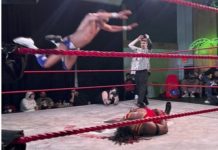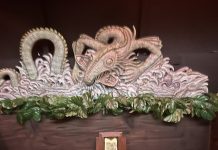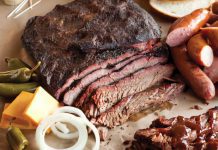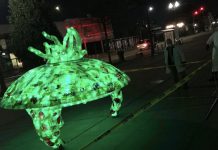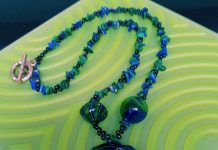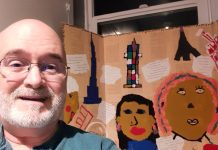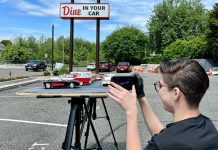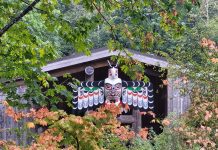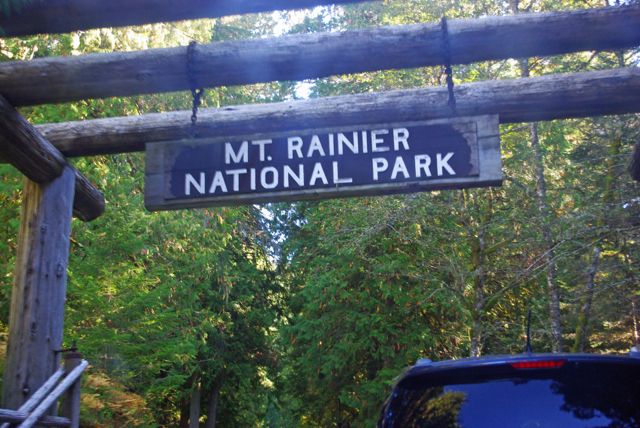By Carolyn White
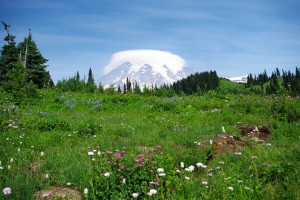
The majesty of Mt. Rainier rules over the Puget Sound landscape, a reminder of the many season-round recreational opportunities available in Mt. Rainier National Park. The mountain’s iconic silhouette graces Washington State’s license plate and is associated with many local businesses.
Most Western Washington residents and visitors have seen Mt. Rainier in one form or another. Travelers from around the world flock to the mountain, making Paradise their primary destination, even if just for a day. Have you been to Paradise? If information deprivation has kept you from Paradise, here are some tips for an enjoyable day in Paradise.
Paradise Found
Paradise, named by James Longmire’s daughter-in-law, Martha, refers to an area famous for its spectacular vistas and summer wildflower meadows. Situated at an elevation of about 5,400 feet (1662 meters)—over a mile high—Paradise is home to the Jackson Visitor Center and the Paradise Inn, which is listed in the National Register of Historic Places. Built in 1916 and opened in the summer of 1917, Paradise Inn comprises a major aspect of the Paradise Historic District, along with the Paradise Ranger Station and the 1920s Guide House.
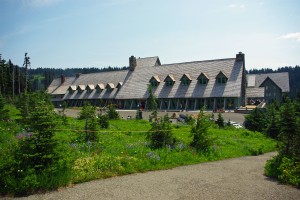
In the winter, Paradise offers great recreational opportunities from snow-shoe adventures to cross country skiing. No ski lifts though. The Paradise area receives an average of 640 inches(16.3 meters) per year, which makes it one of the snowiest places in North America. Check with the National Park Service (NPS) for current winter-use snow conditions, as the season varies by year.
As a rule, the meadows above Paradise Inn are open to winter activities provided the snow pack is at least 2 feet (.6 meters) thick. Some years, this snow pack is gone by mid-June. In 2011, people were snowboarding there on the July 4 holiday.
Once the snow melts, the wild flowers bloom, creating a sea of brilliant colors. This can happen as early as the end of June or as late as Labor Day weekend—the first weekend in September.
As the snow melts, the trails emerge. Keep in mind that certain trails may not be accessible until after the snow melts. Then, they may be wet and muddy. If you plan to hike, bring along an extra pair of hiking shoes or boots, plus an extra pair of socks. Plan for ample fun on these trails and children of all ages might appreciate an extra pair of dry pants for the ride home.
Getting There
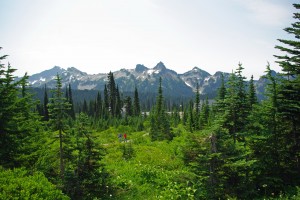
Paradise is a two to three hour drive from many South Sound locations, making it an easy day trip. The scenery en route is magnificent, so you might want to take your time, stop and enjoy the view. If you just want to enjoy the ride, check out tour and transportation options on the Visit Rainier website.
The Nisqually entrance, located on the southwest side of the park, is open year-round via Washington State Route 706, which is also known as the “Road to Paradise.” Unless there is a major snow event, the road from the west entrance to Longmire and National Park Inn is open all year.
During the winter months, from November 1 to May 1, carry chains or have traction tires. The NPS keeps the road plowed and open between Longmire and Paradise when possible. Access to Paradise may be restricted due to snow plow activity. A gate closes off this section of the road in the evening as well as when the road is impassible. Check the NPS Twitter feed for the latest road and travel information.
In the summer, visitors can travel to Paradise from the Seattle/Tacoma area via SR 512 to SR 410 and SR 123. This southeast entrance at Ohanapecosh on SR 123 leads you Paradise through the magnificent Stevens Canyon area and by Reflection Lake. The NPS and Visit Rainier websites offer driving directions from all major highways.
Road Trip Update for 2014
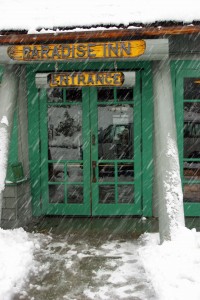
The NPS is upgrading the road from the southwest Nisqually entrance to Longmire during the 2014 summer season. Starting in May 2014, there will be up to 30 minute delays on this section of the road. This will impact traffic to Paradise Monday through Friday for the remainder of the summer season.
In the summer, if you visit the park during the week, you might consider traveling the eastern route through the Ohanapecosh entrance. Along SR 410, you could take a 14 mile (23 K) side trip to Sunrise once it is open, usually around the first part of July. Then continue to SR 123 through Stevens Canyon and visit Paradise. Since the road work ceases around 6:00 pm, you can leave through the southwest entrance, checking out the historical Longmire district along the way. There, now you can say that you have “circumnavigated” Mt. Rainier!
Weather or Not, Do You Go?
During the summer, if you live along the I5 corridor you might wake up to an overcast layer of marine clouds. Looking east, it doesn’t seem like the mountain is there. Yet, the Paradise side may be basking in sun light. Check out the NPS webcam for various locations on the mountain. The Jackson Visitor Center is in the heart of the Paradise area and provides a good view of what is going on weather-wise. Pay attention to the date and time displayed on the lower edge of the photo. Often, these cameras go off-line and you might be looking at last week’s weather.
Another great weather resource is the National Weather Service’s (NOAA) forecast for the West Slopes Central Cascades and Passes. Note the elevation of the snow/freezing level displayed in the Zone Forecast. Keep in mind that Paradise is around 5,400 feet (1662 meters). If the snow/freezing level is slightly above this elevation, then chances are the temperature will be at least in the mid 40’s (7? C). When the freezing level is above 9000’ (2750 meters), then Paradise is usually above 60?F (16? C).
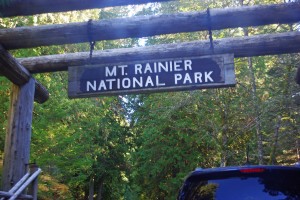
Remember that the weather can change rapidly in the mountains with a shower one minute and sunshine the next. Mt. Rainier creates its own weather. It can be sunny and warm in the South Sound area and cool and showery at Paradise. The opposite weather conditions are possible, as Paradise can be warm and sunny while the South Sound remains cool and foggy. Be prepared—wear layers and multi-tasking clothing options.
Your Attitude at this Altitude
As previously mentioned, Paradise is over a mile-high above sea level. Most visitors originate their journey to Paradise from a location close to sea level. For some, it takes a while to acclimatize to this altitude change. At this elevation, there is less air pressure than at sea-level, which makes the air less dense. When driving, take your time and stop at some of the designated parking areas. Walk around and test your mountain legs. Relax and enjoy the views.
If you have issues with your ears, chew gum or suck on a hard candy. Be gentle when attempting to equalize the pressure your ears. Often infants or young children will experience discomfort in their ears and start crying. Babies cannot intentionally pop their ears. Encourage “popping” through sucking on a bottle or pacifier. Feed your baby during the trip, and do not allow him or her to sleep during descent. Children are especially vulnerable to blockages because their Eustachian tubes are narrower than in adults.
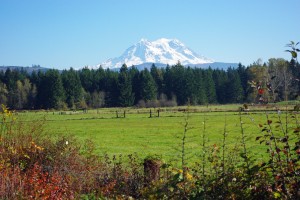
Good hydration is essential at higher elevations. If you experience a headache in Paradise, chances are it could be due to dehydration. Bring drinking water with you and make it a point to take regular sips. Best way to hydrate—swish a sip of water around in your mouth, totally wetting your tongue. Water processed through the tongue is absorbed and assimilated into the blood stream faster than through the stomach. Do not drink water directly from streams or lakes! There are little critters living in the streams that just love to make your intestines churn!
The higher elevation at Paradise means that it’s easier to sun burn. Wear sun-protective clothing. Consider sun screen of a high SPF value. If you plan on hiking over snow, protect the areas under your chin, neck, ears and nose. The snow is very reflective and can burn body parts where the sun normally does not shine.
Even though Mt. Rainier National Park is near Seattle, this area is 97% wilderness. There is no cell phone service and no Wi-Fi.
If you have a view of the sky, your car’s GPS will work. Do not rely on any electronic device that depends on a Wi-Fi or cell phone signal. Pay phones are available at Paradise Inn and Jackson Visitor Center.
For more planning information, check out these 12 essential tips.













